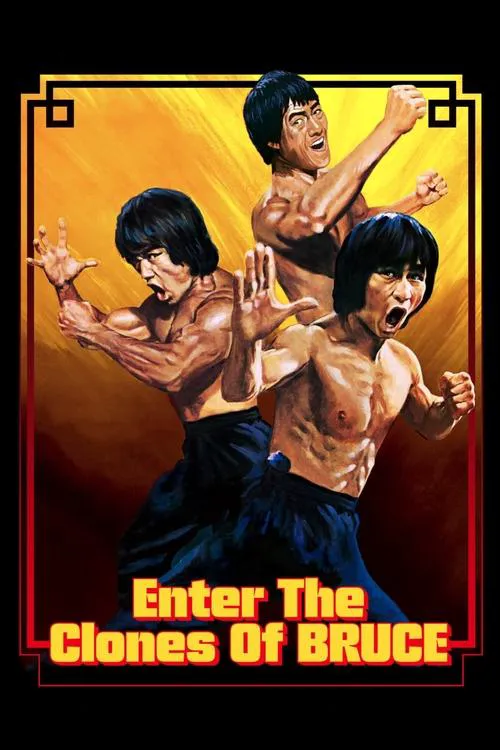Enter the Clones of Bruce

Intrigue
In the early 1970s, Bruce Lee became a global phenomenon, captivating audiences worldwide with his lightning-fast kicks, philosophical musings, and undeniable charm. However, after his untimely death in 1973, enterprising filmmakers and distributors saw an opportunity to exploit this cultural icon for their own gain. They created numerous films featuring Lee's likeness, often using body doubles and editing tricks to make it seem as though Lee was still alive, fighting and winning. "Enter the Clones of Bruce" delves into this dark and fascinating chapter of film history, a time when the boundaries between reality and fiction blurred, and the definition of a movie star was stretched to its limits. The documentary takes viewers on a journey from the sets of these hastily produced, low-budget films to the marketing strategies that helped them find their way to unsuspecting audiences. The first film to kick off the Lee clone craze was "Game of Death," a project that Bruce Lee himself had started working on before his passing. Frustrated by the lack of progress and the constant meddling of his producers, Lee left the film in limbo, only to find it being picked up and reworked after his death. Using outtakes and other archival footage, "Enter the Clones of Bruce" shows how the film's producers used Lee's existing footage to create a narrative that bore little resemblance to what Lee had originally envisioned. The documentary also explores the various actors and doubles who were recruited to play Lee in these films. Some were professional stuntmen and martial artists, while others were relatively unknown actors looking for a quick payday. Whatever their backgrounds, they were all tasked with replicating Lee's signature style and mannerisms, often with disastrous results. As the film industry's appetite for Lee clones continued to grow, so did the absurdity and incoherence of the movies themselves. "Enter the Clones of Bruce" features clips from some of these infamous films, including "Bruce vs. Bruce," "Enter the Game of Death," and "Bruce Lee in 'Game of Death 2'." These films are an affront to good taste, with their laughable special effects, atrocious acting, and general disregard for Lee's legacy. Despite the poor quality of these films, they did manage to deceive audiences at the time, partly due to their slick marketing campaigns and the cultural phenomenon that was Bruce Lee. As the documentary points out, Lee was more than just a charismatic star; he was a cultural ambassador, representing a unique blend of martial arts, Eastern philosophy, and Western pop culture. "Enter the Clones of Bruce" sheds light on the shady business practices and exploitative tactics employed by the film industry during this period, as well as the human toll that this phenomenon took on the individuals involved. For some of the actors who played Lee, the experience was a lucrative but ultimately thankless one. They were often treated as disposable doubles, with little opportunity to build on their success or develop meaningful careers. Meanwhile, Lee's family and estate were powerless to stop the exploitation of his likeness, despite their best efforts to protect his image and legacy. As the documentary highlights, Lee's wife, Linda, was deeply distressed by the unauthorized use of her husband's image, particularly in films that mocked or misrepresented his values. Through its interviews with industry insiders, actors, and family members, "Enter the Clones of Bruce" delivers a searing indictment of the film industry's willingness to exploit and manipulate the public's affection for cultural icons. As the documentary so eloquently puts it, these films are not tribute acts, but rather "death games" played at the expense of those they purport to honor. In the end, "Enter the Clones of Bruce" is a fascinating and thought-provoking documentary that casts a critical eye on the film industry's dark past. By examining the Lee clone phenomenon, the film raises essential questions about the limits of exploitation, the responsibility that comes with celebrating cultural icons, and the enduring power of one man's legacy to inspire, deceive, and fascinate audiences to this day.
Critiques
Recommandations




